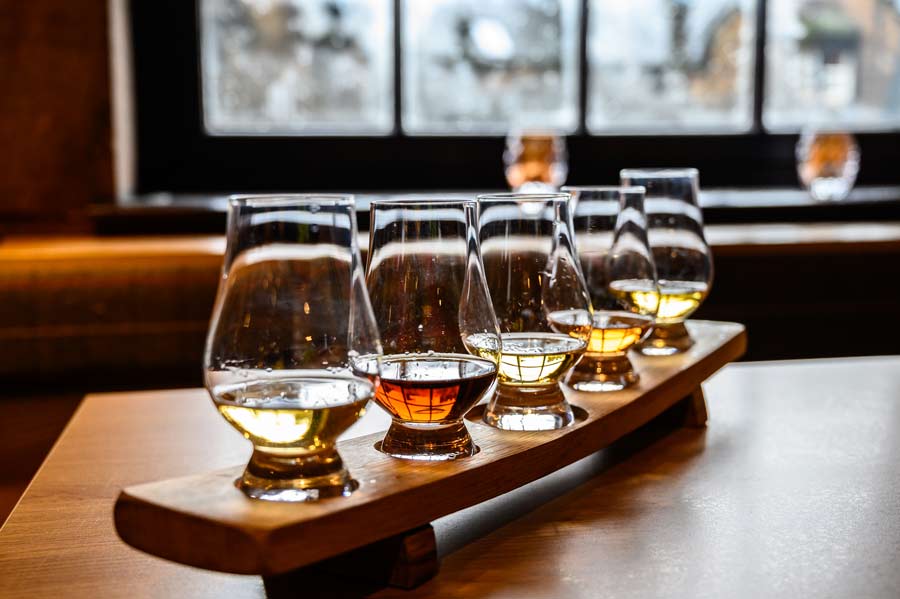Tasting whiskey is a personal experience. The goal isn’t to list the most descriptors about a pour – it’s to explore what you do and don’t enjoy drinking. That being said, the more whiskeys we taste, the more flavors we will come across.
There are five key categories most whiskey drinkers can identify: Fruit & Floral, Wood, Grain, Sweet Aromatics, and Spice. Working outward, those categories expand to subgroups and finally individual flavors.
Now we can start to build our own flavor library. Begin with what you already have in your home. Some commonly described whiskey flavors are vanilla, caramel, cherries, corn, banana, apple, pepper, cinnamon, spearmint, honey, syrup, butterscotch, coffee, and cocoa. Some of these may already be in your kitchen. Many of the others can be found in small packages at the store. As you read whiskey reviews, pay attention to the tasting notes and jot down ideas. Then grab a spice jar or piece of fruit at the store.
Begin by smelling the various items. We know when a whiskey is sweet, but can we clearly distinguish between caramel, honey, and syrup? What does vanilla really smell like? We know what spicy is, but is it minty, herbal, peppery, rye bread? What distinguishes a cherry from a green apple or a banana? Taking the time to go through these nuances can really make a difference when it comes to nosing whiskey. I will still pull some of these items out and compare them side-by-side with a spirit when I detect a familiar scent.
Next, we move on to the palate, which is actually much more challenging than the nose. Flavors tend to rise up from the glass, especially in higher-proof whiskeys, but that alcohol content can have a numbing effect inside the mouth. To avoid the risk of immobilizing your taste buds, add a little water. Not every whiskey is improved by adding water, but I can often get a clearer picture after a few drops. Save the undiluted sips for the end if you can.
There are two main categories we’d not recommend training your palate on: floral and wood. Floral scent is easily recognizable, whether or not you identify it as a rose or a geranium. You aren’t going to chew on flowers any more than freshly cut grass or an old leather shoe. Likewise, you aren’t likely to chew on wood planks, though here I note we often see reviews describing the taste of wood. In this case, you will learn to detect the influence that years of barrel aging have on the nose versus younger spirits. Then, you will certainly detect the bitterness, the drying out of your cheeks, and the feeling in your throat when the oak is overpowering. Identifying this flavor is how we can discover the level of aging we prefer best.
You can definitely improve the way you describe certain flavors with practice. But in the end, all that really matters is the conviction to have a preference of one whiskey over another. Taste often and you will learn what you like, whether you can write an essay on it or not.
Whatever your preferences, let Tour With Us KY take you on a journey to explore all that the Kentucky bourbon community has to offer!
Northern Kentucky Bourbon Tours
Original Blog Source: https://www.bourbonbanter.com/banter/how-to-train-your-senses-for-whiskey-tasting/#.YJ9BBJNKg-Q


